HTTP server is created by connecting an ENC28J60 module to the mbed board. It is serving a webpage which enables remotely turn on/off LED1 (or other device). Compile, download, run and type 192.168.0.170/secret/ into your web browser and Flot Interactivity Graphique
Dependencies: UIPEthernet mbed FCT_WEB hebergement
Fork of WebSwitch_ENC28J60 by
Page généré :
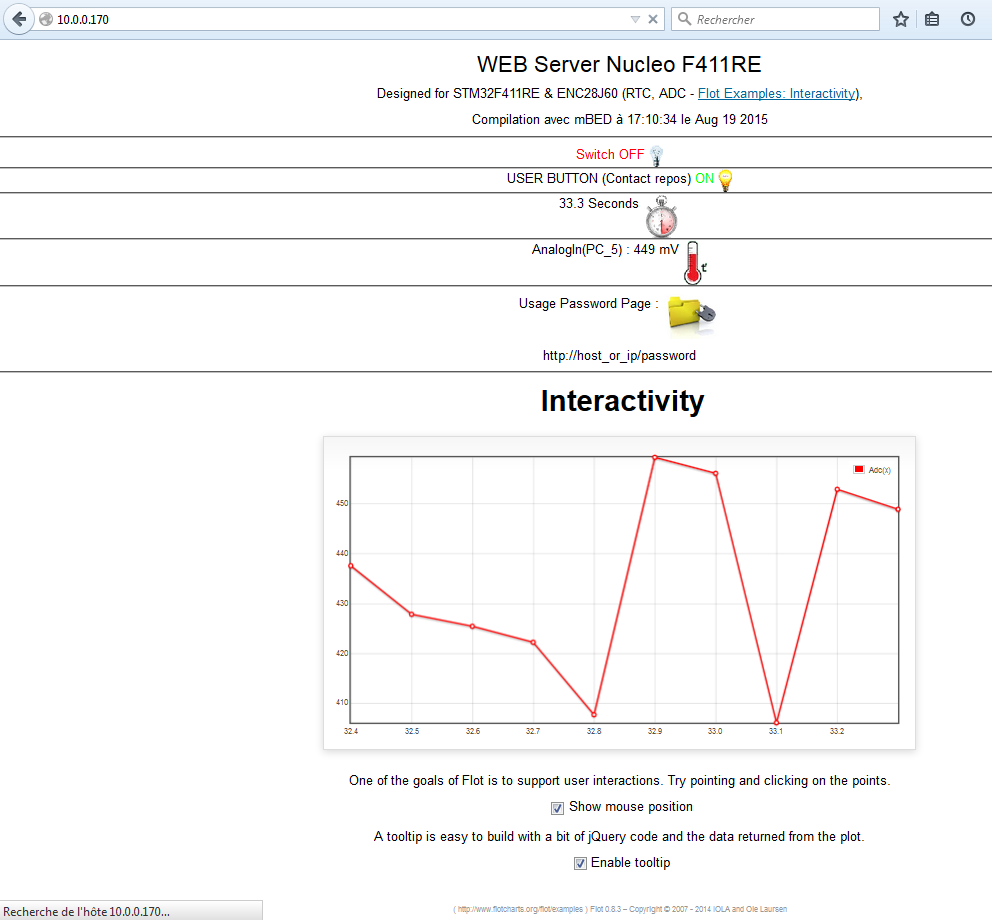
P.S : 1ère mise en fonctionnement de la carte NUCLEO STM32F411RET6 Instruction pour la mise en fonctionnement : https://developer.mbed.org/users/Fo170/notebook/the-stm32-nucleo-64-board/
Vue d'ensemble :
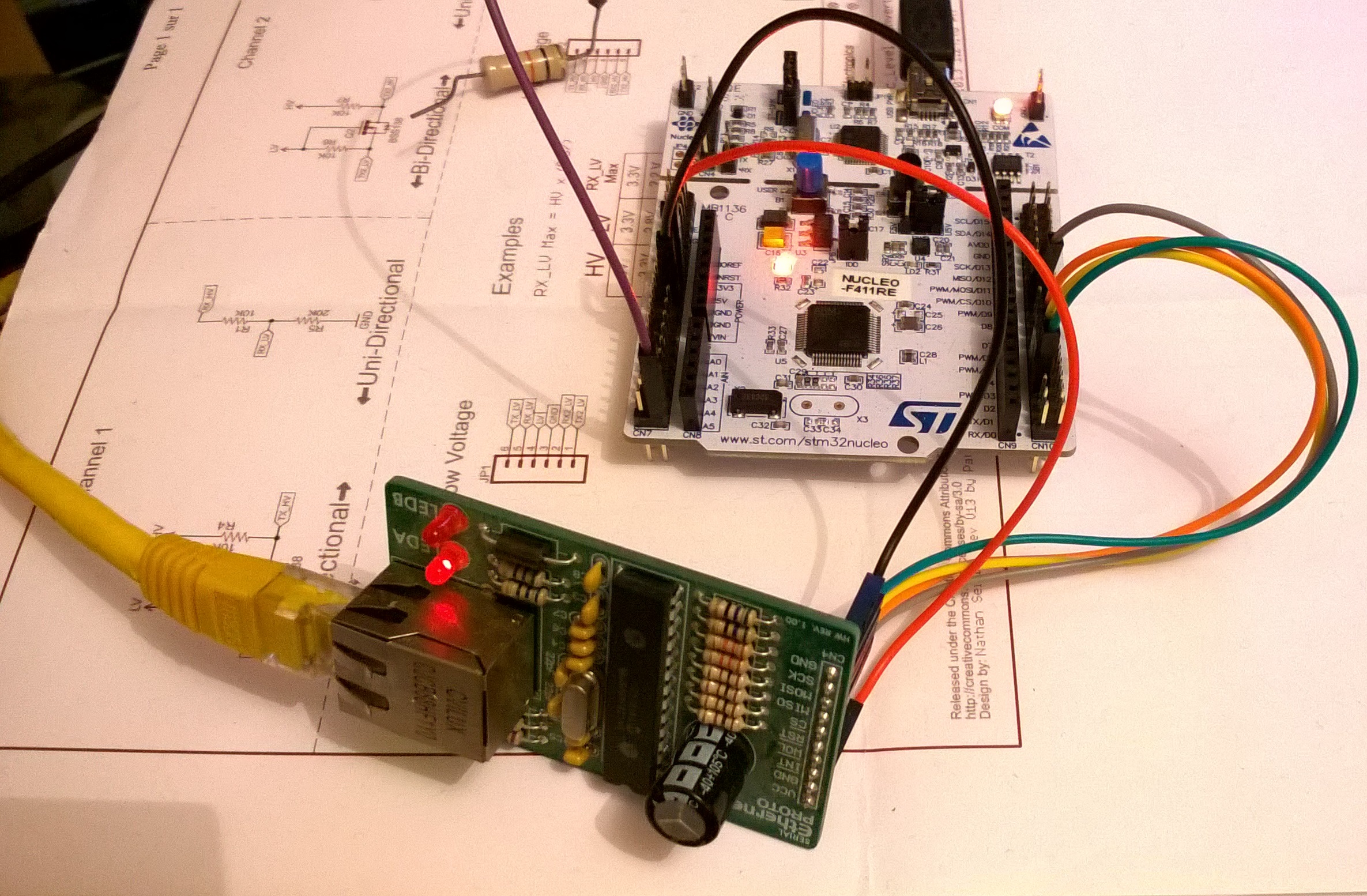
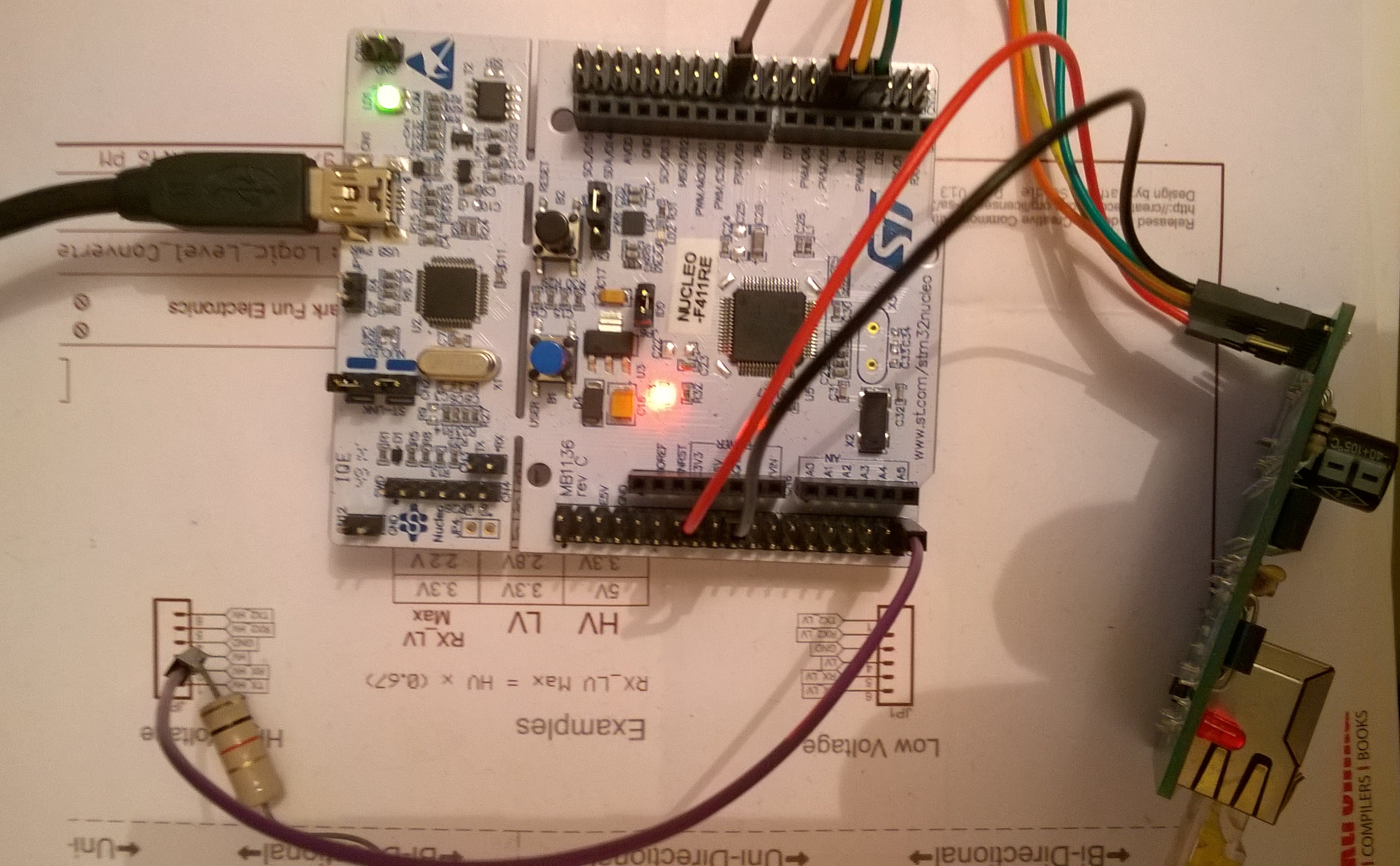
Vue de la carte ENC28J60 :
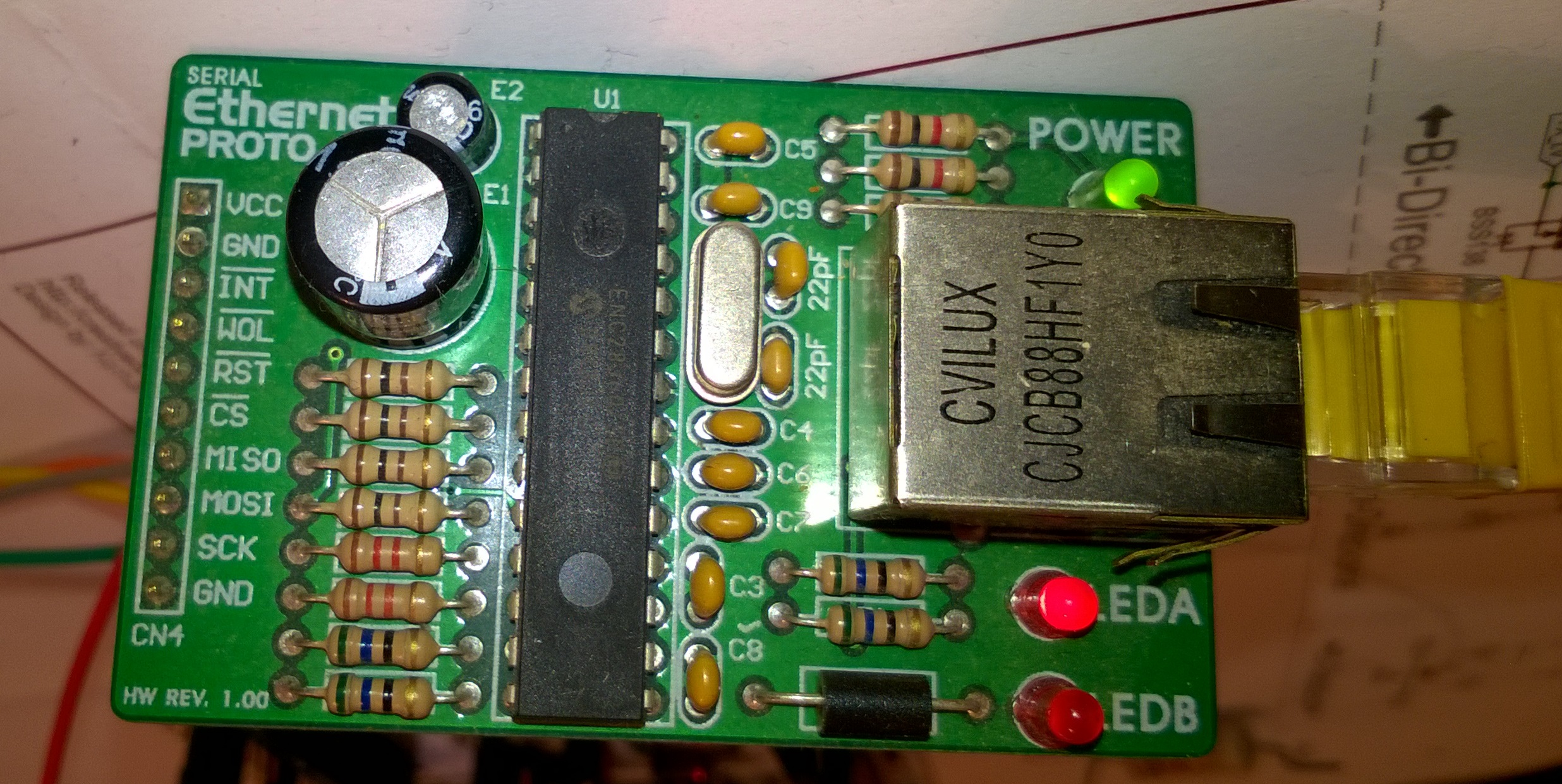
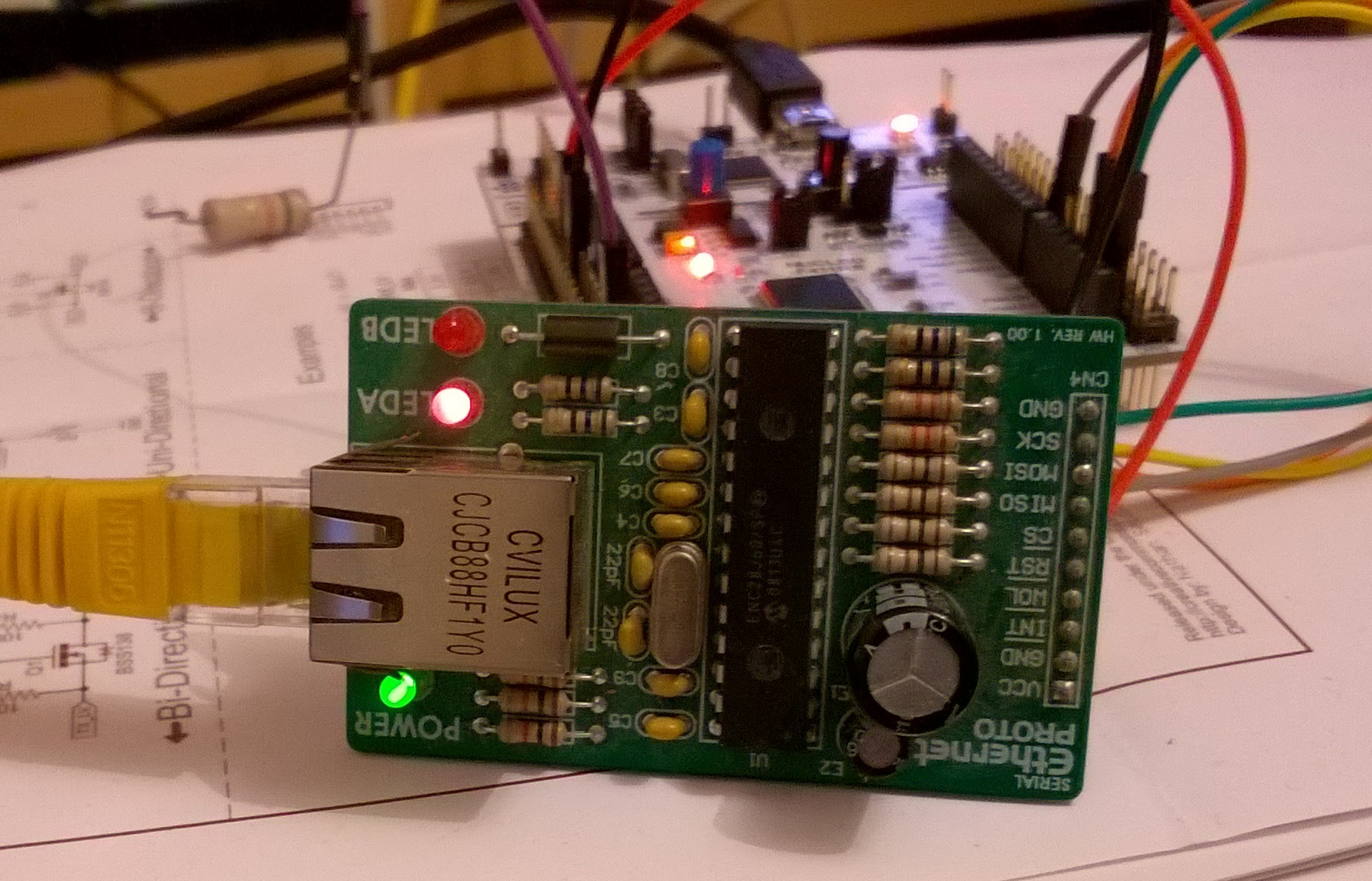
Carte Nucléo :
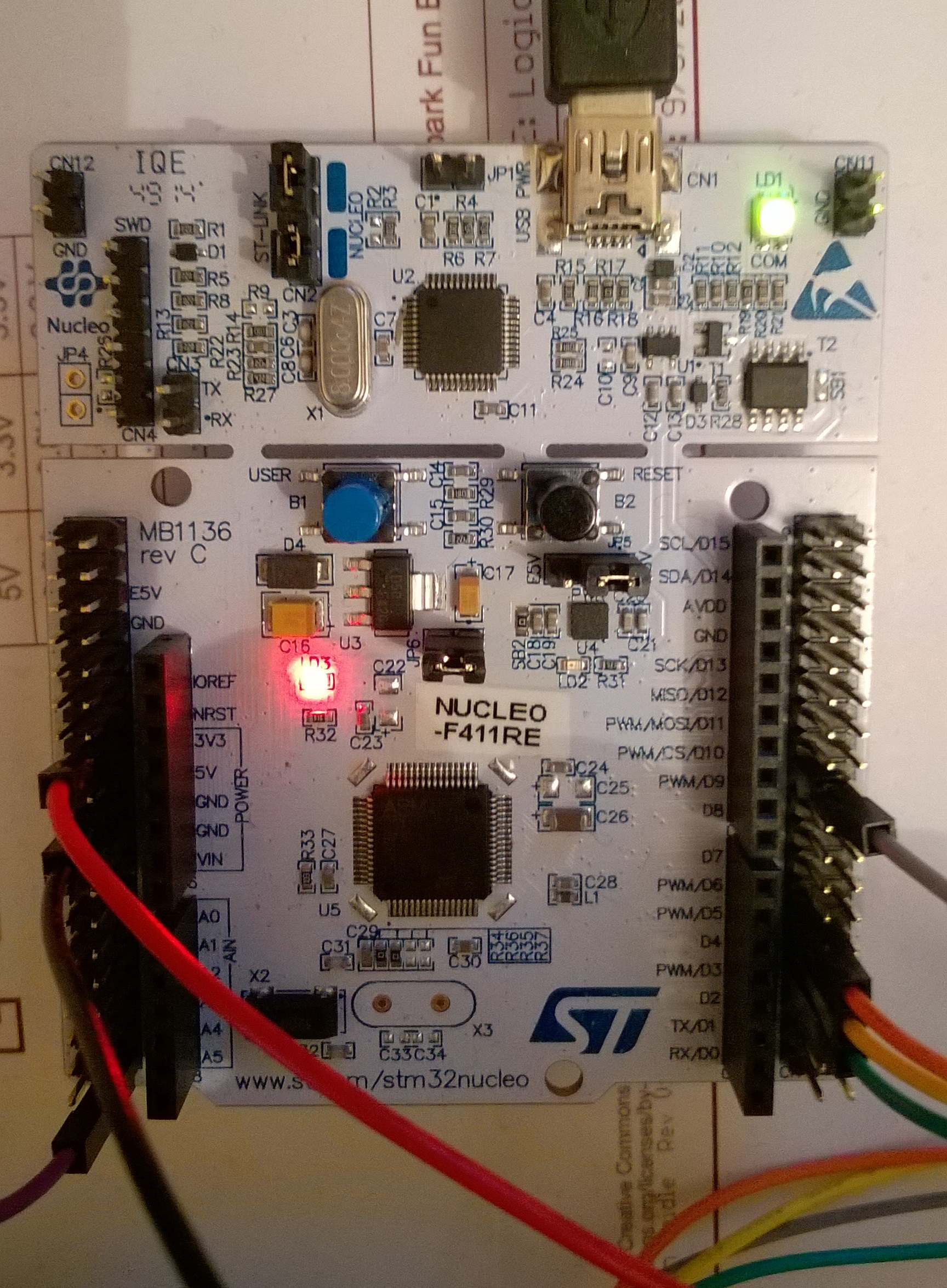
main.cpp
- Committer:
- Fo170
- Date:
- 2015-07-25
- Revision:
- 5:a46a2512e17e
- Parent:
- 4:d34811deedab
- Child:
- 6:2ce163810c2f
File content as of revision 5:a46a2512e17e:
/* In this example LED1 is switched on/off using a web browser connected to this HTTP server.
* The example is based on the Tuxgraphics Web Switch <http://www.tuxgraphics.org/>.
* This HTTP server is built around the the ENC28J60 chip
* driven by the UIPEthernet library <https://github.com/ntruchsess/arduino_uip>
* ported to mbed.
*/
#include <mbed.h>
#include <UIPEthernet.h>
#include <UIPServer.h>
#include <UIPClient.h>
#include <string>
DigitalOut myled(LED1);
AnalogIn a_in(PC_0);
using namespace std;
// UIPEthernet is the name of a global instance of UIPEthernetClass.
// Do not change the name! It is used within the UIPEthernet library.
#if defined(TARGET_LPC1768)
UIPEthernetClass UIPEthernet(p11, p12, p13, p8); // mosi, miso, sck, cs
#elif defined(TARGET_LPC1114)
UIPEthernetClass UIPEthernet(dp2, dp1, dp6, dp25); // mosi, miso, sck, cs
#elif defined(TARGET_LPC11U68)
UIPEthernetClass UIPEthernet(P0_9, P0_8, P1_29, P0_2); // mosi, miso, sck, cs
#elif defined (TARGET_NUCLEO_F103RB)
UIPEthernetClass UIPEthernet(PB_5, PB_4, PB_3, PB_6); // mosi, miso, sck, cs
#elif defined (TARGET_NUCLEO_F401RE)
UIPEthernetClass UIPEthernet(PB_5, PB_4, PB_3, PB_6); // mosi, miso, sck, cs
#elif defined (TARGET_NUCLEO_F411RE)
UIPEthernetClass UIPEthernet(PB_5, PB_4, PB_3, PB_6); // mosi, miso, sck, cs
// If your board/plaform is not present yet then uncomment the following two lines and replace TARGET_YOUR_BOARD as appropriate.
//#elif defined (TARGET_YOUR_BOARD)
//UIPEthernetClass UIPEthernet(SPI_MOSI, SPI_MISO, SPI_SCK, SPI_CS); // mosi, miso, sck, cs
#endif
// Note:
// If it happends that any of the SPI_MOSI, SPI_MISO, SPI_SCK, SPI_CS pins collide with LED1 pin
// then either use different SPI port (if available on the board) and change the pin names in the constructor UIPEthernet(...) accordingly
// or instead of using LED1 pin, select a free pin (not used by SPI port) and connect to it an external LED which is connected to a resitor that is connected to the groud.
// In the second case remember to replace LED1 in sw(LED1) constructor (see below).
// MAC number must be unique within the connected network. Modify as appropriate.
const uint8_t MY_MAC[6] = {0x00,0x01,0x02,0x03,0x04,0x06};
// IP address must be also unique and compatible with your network. Change as appropriate.
const IPAddress MY_IP(192,168,0,170);
#define IPAdress_String "192.168.0.170"
const uint16_t MY_PORT = 80; // for HTTP connection
EthernetServer myServer = EthernetServer(MY_PORT);
// In this example we are turning on/off LED1.
DigitalOut sw(LED1); // Change LED1 to a pin of your choice. However, make sure that it does not collide with any of the SPI pins already used in the UIPEthernet(...) constructor above!
const string PASSWORD = "secret"; // change as you like
const string HTTP_OK = "HTTP/1.0 200 OK";
const string MOVED_PERM = "HTTP/1.0 301 Moved Permanently\r\nLocation: ";
const string UNAUTHORIZED = "HTTP/1.0 401 Unauthorized";
string httpHeader; // HTTP header
string httpContent; // HTTP content
// analyse the url given
// return values: -1 invalid password
// -2 no command given but password valid
// -3 just refresh page
// 0 switch off
// 1 switch on
//
// The string passed to this function will look like this:
// GET /password HTTP/1.....
// GET /password/ HTTP/1.....
// GET /password/?sw=1 HTTP/1.....
// GET /password/?sw=0 HTTP/1.....
int8_t analyse_get_url(string& str)
{
if(str.substr(5, PASSWORD.size()) != PASSWORD)
return(-1);
uint8_t pos = 5 + PASSWORD.size();
if(str.substr(pos, 1) == " ")
return(-2);
if(str.substr(pos, 1) != "/")
return(-1);
pos++;
string cmd(str.substr(pos, 5));
if(cmd == "?sw=0")
return(0);
if(cmd == "?sw=1")
return(1);
return(-3);
}
string& moved_perm(uint8_t flag)
{
if(flag == 1)
httpContent = "/" + PASSWORD + "/";
else
httpContent = "";
httpContent += "<h1>301 Moved Permanently</h1>\r\n";
return (httpContent);
}
string& page(uint8_t status)
{
char buffer[32];
char time_stamp[32];//as our lcd is of 16 character it is so
//-------------
httpContent = "<h2>Web Switch Nucleo-F411RE & ENC28J60 (RTC et ADC) ";
httpContent += IPAdress_String "\r\n";
// Test d'image en base64 :
// http://webcodertools.com/imagetobase64converter/Create
httpContent += "<img alt='' src='data:image/png;base64,iVBORw0KGgoAAAANSUhEUgAAABAAAAAQCAIAAACQkWg2AAAABGdBTUEAALGPC/xhBQAAAAlwSFlzAAAOwwAADsMBx2+oZAAAABp0RVh0U29mdHdhcmUAUGFpbnQuTkVUIHYzLjUuMTAw9HKhAAAAUklEQVQ4T2NggIEGMIBzCTDgSh0cHAjrIcFgiGFoGoCWELYQrgLIgGsg4CtkaTibWNfu378fq2tpHx6EbcAMQ8J6iPU3cpIhbCqaisFpCTwVAwB5lit+0ltbrgAAAABJRU5ErkJggg=='>";
httpContent += "</h2>\r\n";
if(status == 1) {
httpContent += "<pre>\r\n <font color=#00FF00>ON</font>";
httpContent += " <a href=\"./?sw=0\">[switch off]</a>\r\n";
} else {
httpContent += "<pre>\r\n <font color=#FF0000>OFF</font>";
httpContent += " <a href=\"./?sw=1\">[switch on]</a>\r\n";
}
httpContent += " <a href=\".\">[refresh status]</a>\r\n";
httpContent += "</pre>\r\n";
httpContent += "<hr>\r\n";
//-------------
time_t seconds = time(NULL)+ 19800; // time(null) gives the GMT time .
// printf("Time as seconds since January 1, 1970 = %d\n", seconds);
strftime(time_stamp, 32, "%y %m %d, %H:%M:%Ss", localtime(&seconds));
// this converts the value in seconds obtained above to human readable format and assigns it to the timestamp
sprintf(buffer, "%s", time_stamp);// diplays the human readable time
httpContent += buffer;
httpContent += "\r\n";
httpContent += "<hr>\r\n";
//----------------
httpContent += "Temperature: ";
sprintf(buffer, "%4.3f", a_in * 3.3);
httpContent += buffer;
httpContent += "°C\r\n";
httpContent += "<hr>\r\n";
//-----------
wait(1);
return httpContent;
}
void http_send(EthernetClient& client, string& header, string& content)
{
char content_length[5] = {};
header += "\r\nContent-Type: text/html\r\n";
header += "Content-Length: ";
sprintf(content_length, "%d", content.length());
header += string(content_length) + "\r\n";
header += "Pragma: no-cache\r\n";
header += "Connection: About to close\r\n";
header += "\r\n";
string webpage = header + content;
client.write((uint8_t*)webpage.c_str(),webpage.length());
}
int main()
{
// RTC
set_time(1387188323); // Set RTC time to 16 December 2013 10:05:23 UTC
// Date and time are set.
UIPEthernet.begin(MY_MAC,MY_IP);
myServer.begin();
while(1) {
EthernetClient client = myServer.available();
if (client) {
size_t size = client.available();
if(size > 0) {
uint8_t* buf = (uint8_t*)malloc(size);
size = client.read(buf, size);
string received((char*)buf);
free(buf);
if(received.substr(0, 3) != "GET") {
// head, post or other method
// for possible status codes see:
// http://www.w3.org/Protocols/rfc2616/rfc2616-sec10.html
httpHeader = HTTP_OK;
httpContent = "<h1>200 OK</h1>";
http_send(client, httpHeader, httpContent);
continue;
}
if(received.substr(0, 6) == "GET / ") {
httpHeader = HTTP_OK;
httpContent = "<p>Usage: http://host_or_ip/password</p>\r\n";
http_send(client, httpHeader, httpContent);
continue;
}
int cmd = analyse_get_url(received);
if(cmd == -2) {
// redirect to the right base url
httpHeader = MOVED_PERM;
http_send(client, httpHeader, moved_perm(1));
continue;
}
if(cmd == -1) {
httpHeader = UNAUTHORIZED;
httpContent = "<h1>401 Unauthorized</h1>";
http_send(client, httpHeader, httpContent);
continue;
}
if(cmd == 1) {
sw = 1; // switch on
}
if(cmd == 0) {
sw = 0; // switch off
}
httpHeader = HTTP_OK;
http_send(client, httpHeader, page(sw));
}
}
}
}
 FOURNET Olivier
FOURNET Olivier
